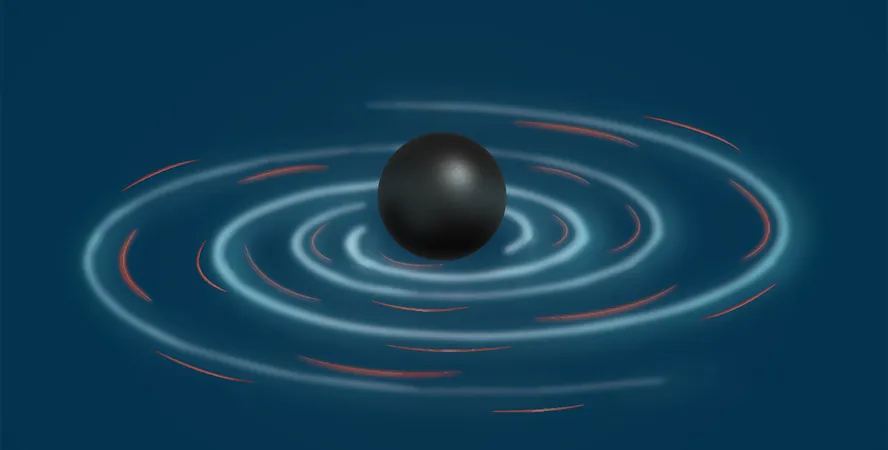
Supermassive Black Holes Are Stifling Star Formation in Cosmic Cities
2024-12-22
Author: Yu
In a Groundbreaking Study, Researchers Reveal the Influence of Black Holes on Galaxy Evolution
A recent study utilizing NASA’s groundbreaking James Webb Space Telescope has unveiled a stunning revelation about the role supermassive black holes play in the formation of galaxies. The research, which focused on a specific protocluster in the universe, indicates that these cosmic giants may effectively halt the development of "cosmic cities" by suppressing star formation within their host galaxies.
Methodology Unveiled
The research team employed the NIRCam instrument of the Webb telescope to observe infrared wavelengths corresponding to the Paschen-beta emission line. This emission line, stretched by the ongoing expansion of the universe, appears in the infrared spectrum rather than in visible light—a key aspect that allowed researchers to analyze the star formation activity across various galaxies. By comparing different wavelengths and stacking images to produce clearer visuals, scientists gained valuable insights into the star formation landscape of galaxies both harboring active black holes and those that do not.
Shocking Results That Challenge Our Understanding of the Universe
The study found a striking correlation: galaxies hosting X-ray-emitting black holes experienced roughly three times less star formation compared to their inactive counterparts. Notably, normal star-forming galaxies exhibited star formation extending as far as 8,000 light-years from their centers. In contrast, galaxies with active black holes displayed minimal star formation beyond their core regions, suggesting a powerful inhibitory effect at play.
Limitations and Future Directions
While the findings provide captivating insights, the research has its limitations. The study focused solely on one protocluster, so the results may not reflect broader cosmic trends. Additionally, the researchers relied on indirect methods to estimate the mass and influence of the black holes, which could affect the precision of their conclusions. The sample size, comprising just 19 galaxies, is relatively modest but still significant given the vast distances involved.
Implications for Galactic Evolution
This groundbreaking research supports the idea that supermassive black holes could actively shape the evolution of galaxies. With observations indicating that galaxies experiencing higher concentrations of mass are more significantly impacted by active black holes, it raises intriguing questions about the history of these galaxies. Such findings point to the possibility that periods of intense black hole activity could lead to long-term changes in star formation patterns.
Funding and Legacy of the Study
This significant research was conducted with support from esteemed institutions, including Waseda University and various European research programs. Leveraging data from the NASA-operated James Webb Space Telescope, the study’s findings are part of a broader effort to unlock the mysteries of the universe. The data is publicly accessible through the Barbara A. Mikulski Archive for Space Telescopes (MAST), ensuring that this pivotal research can be scrutinized and built upon by future scientists.
Conclusion: The Universe’s Hidden Dynamics Revealed
As we continue to study the cosmos, these findings emphasize the intricate relationship between supermassive black holes and galaxy formation. With every new observation, we inch closer to understanding how these celestial phenomena shape the universe as we know it. Stay tuned for more revelations from the edge of space, as we explore the breathtaking intricacies of our universe!




 Brasil (PT)
Brasil (PT)
 Canada (EN)
Canada (EN)
 Chile (ES)
Chile (ES)
 España (ES)
España (ES)
 France (FR)
France (FR)
 Hong Kong (EN)
Hong Kong (EN)
 Italia (IT)
Italia (IT)
 日本 (JA)
日本 (JA)
 Magyarország (HU)
Magyarország (HU)
 Norge (NO)
Norge (NO)
 Polska (PL)
Polska (PL)
 Schweiz (DE)
Schweiz (DE)
 Singapore (EN)
Singapore (EN)
 Sverige (SV)
Sverige (SV)
 Suomi (FI)
Suomi (FI)
 Türkiye (TR)
Türkiye (TR)